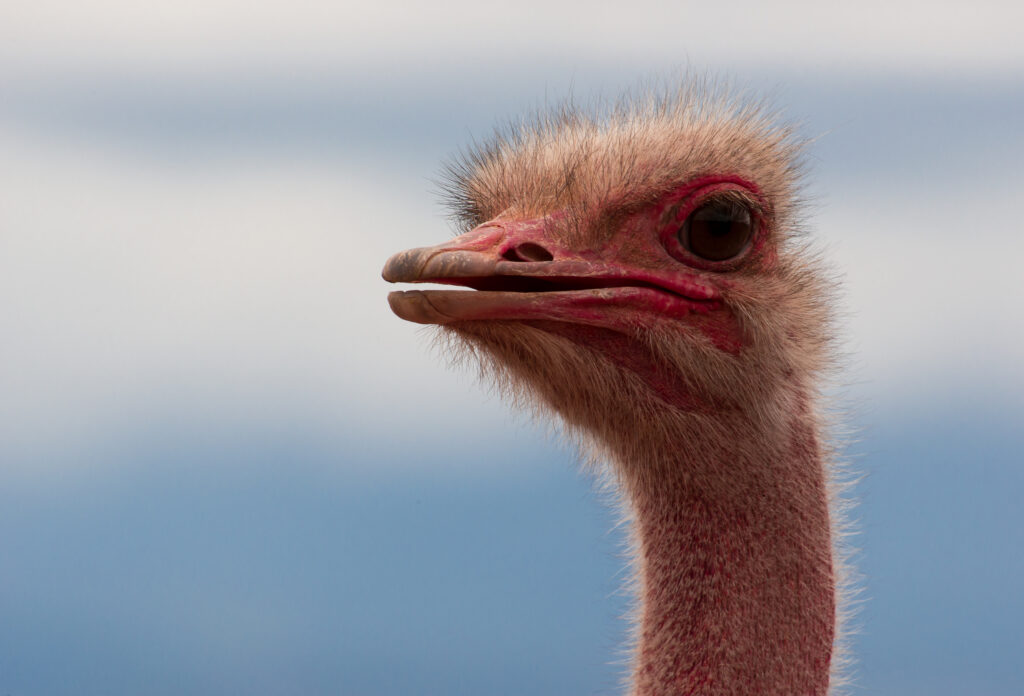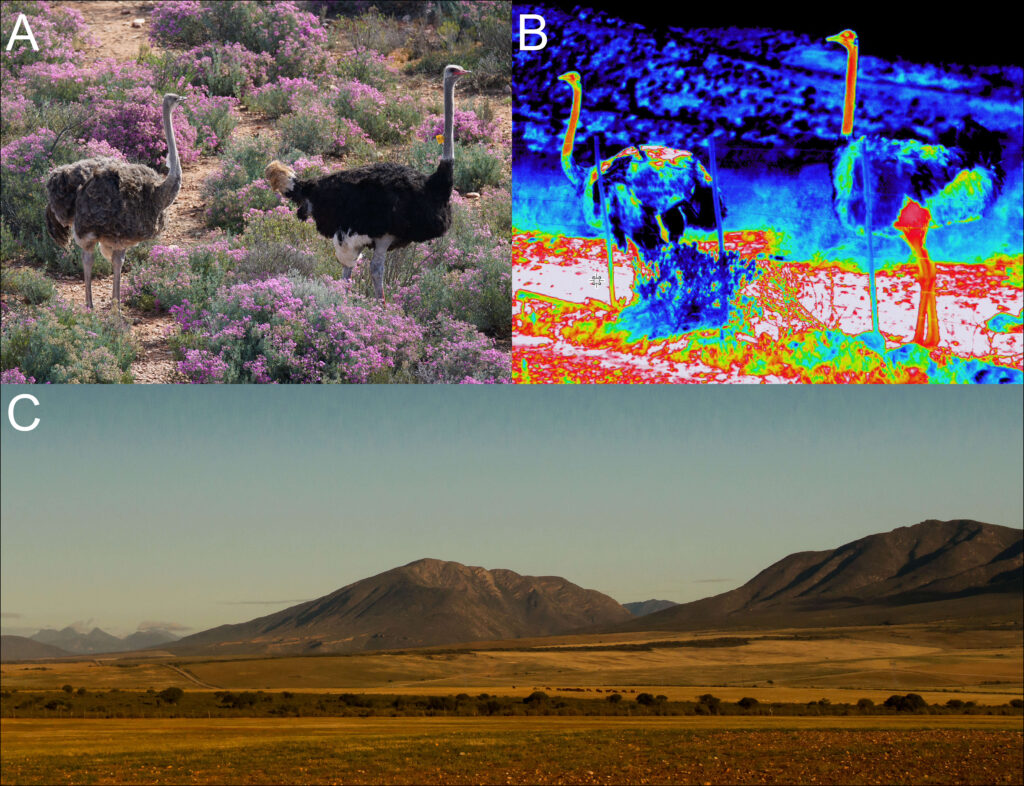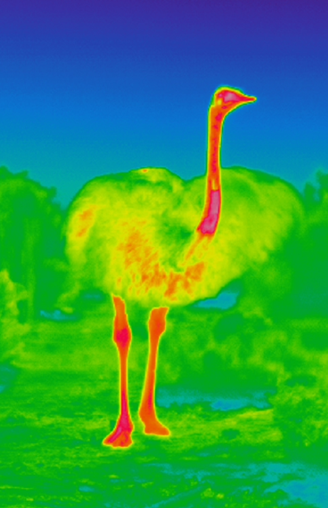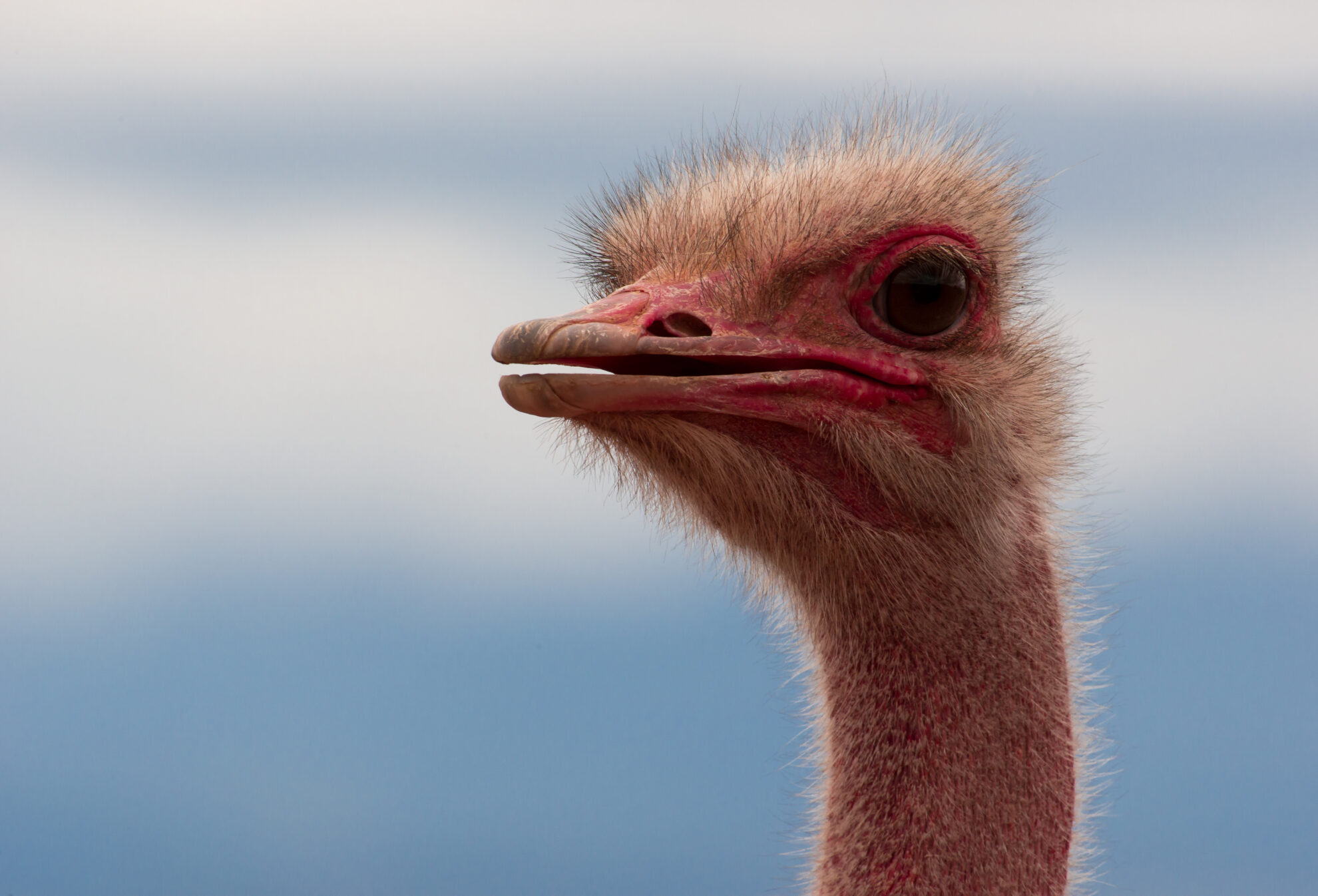In our field study in the Western Cape Province in South Africa, we investigated temperature regulation in the World’s largest bird: the Ostrich (Struthio camelus) and its fitness consequences for female reproductive success (egg laying rate). We were also interested in the genetic background and evolution of such temperature regulation. We used thermal imaging (infrared camera, or “IR camera”) to measure individual variation in neck and head temperature in this large flightless bird species. Our study was carried out in a semi-natural, individually marked ostrich population between 2012 and 2017, where we had access to individual variation in reproductive success and pedigree information from relatives, such as family members, siblings, parents, cousins etc.

Photo by Erik Svensson.
Since the head and neck lack feathers in the ostrich, we could measure skin temperatures of both these body parts under normal outdoor conditions in a natural environment. We were also able investigate how individual temperature profiles affected the reproductive success of individual females. By comparing the temperature profiles of relatives in this individually marked population, we were able to estimate how much genetic variation there is in the ability to regulate temperature in thermal profiles, and thereby the evolutionary potential of the ostrich to adapt to future climate changes with increasing temperatures. We also compared the thermoregulatory ability of different subspecies of ostriches, in particular those from East Africa that inhabit a more stable tropical climate with lower temperature fluctuations, compared to ostriches from southern Africa that have evolved in a climate characterized by greater temperature fluctuations and with strongly varying temperatures.
Our study is important because large vertebrates such as the ostrich that live in extreme environments like deserts and semi-deserts are likely to be threatened by anticipated climate change with expected rapidly increasing temperatures. Large endothermic vertebrates are predicted to be at higher risk of overheating more easily compared to smaller ectothermic animals that can more easily dissipate excess heat. It is therefore important to know how ambient temperature affects reproductive success via effects on various organs, including the neck and head, where the latter body part is likely to also reflect the temperature of the brain. The brain is an organ that is particularly sensitive to overheating. Furthermore, it is important to know if there is any genetic variation in the ability to tolerate high temperatures and to adaptively regulate body temperature. Genetic variation in thermoregulatory capacity is required for the ostrich to adapt through natural selection to future warmer climates. It is important to know whether subspecies of ostriches from different parts of Africa that have experienced distinct climatic conditions during their evolutionary history show signs of having adapted to these climates with variable degrees of temperature fluctuations.
Our most important finding in this study was that for a flexible physiological trait such as individual thermal profiles, there exists genetic variation. We were able to detect this variation using our large data set of individuals and by comparing relatives. We found that the head (and thus the brain) was less affected by external temperature than the neck. The ostrich therefore seem to be able to “buffer” an important organ from dangerous overheating through temperature regulation. The functionally important temperature regulation of the head also had a positive effect on egg-laying rate during heat waves, but we found no such effect under normal temperature conditions. We also found that ostriches from the more tropical climate of East Africa where the temperature variations are less dramatic had a lower ability to regulate temperature, as expected, than ostriches from southern Africa which experience greater temperature fluctuations.

Photos by C. K. Cornwallis (A) and Erik Svensson (B, C).
Ostriches inhabit some of the world’s most extreme environments with extremely high temperatures, such as deserts and semi-deserts. There are good reasons to be concerned about the future of the ostrich and the extinction risk of this iconic species. Our study has shown that ambient temperatures affect the reproductive success of individual ostriches, but also that there is genetic variation for the ability to regulate temperature. The existence of significant genetic variation in the ability to thermoregulate gives some hope that the ostrich will be able to adapt to future rising temperatures through evolution by natural selection. However, the amount of genetic variation for the ability to thermoregulate was limited and low, so it is still uncertain whether the ostrich has the ability to adapt at a sufficient pace if future temperatures would increase quickly in the future.
The ostrich is a well-known bird, both within and outside Africa, and this species is therefore important to anyone interested in nature, bird watchers, wildlife photographers and the ecotourism industry. Ostriches also play an important role in local cultural traditions in Africa and it is economically important for South Africa’s ostrich farming industry. For these and several other reasons, it is important to know to what extent this species can adapt evolutionarily to future climates, or alternatively go extinct due to too rapid temperature changes. We were surprised to be able to detect genetic variation for such a flexible physiological trait like temperature profiles. Individual temperature profiles vary from hour to hour and from day to day, which leads to large measurement errors and makes it difficult to detect any genetic variation, even if it exists. Our study was made possible by using a large dataset that we collected over several years where we were able to measure every individual several times during their lifetime. In total, we took 2744 infrared thermal images from 423 different female ostriches. For most of these individual ostriches, we also had information from relatives’ temperature profiles, which enabled our genetic analyses.

Photo by Erik Svensson.
In conclusion, the use of infrared thermal camera technology enabled us to carry out this unique study where we managed to demonstrate genetic variation in the ability to regulate temperature in the world’s largest and most enigmatic bird species.


